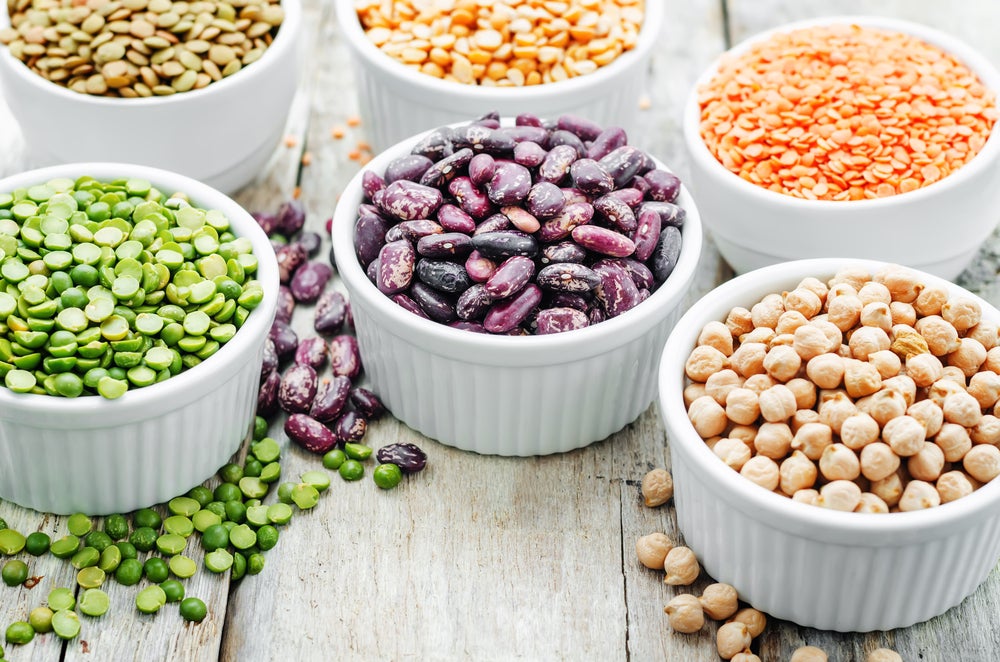One Ingredient, Three Ways: Beans

We asked our friends at the Natural Gourmet Institute to weigh in on popular, healthy ingredients and cooking methods. Vegetarian Times has partnered with the renowned New York-based culinary school to create a comprehensive online course, Foundations of Plant-Based Nutrition. Whether you’re a new vegetarian, an avid cook wanting to expand your skills, or contemplating a career in the food industry, you will find this course helpful. (Sign up to receive discounts and information about this awesome course.)
Considering their copious nutritional benefits and relatively low cost, beans don’t get nearly enough of the high praise that they deserve.
One cup of cooked beans contains about 15 grams of fiber—more than half of the daily recommended intake—as well as about 15 grams of plant-based protein. Additionally, beans are full of soluble and insoluble fiber, which helps increase satiety and prevent constipation. While some may shy away from beans due to their GI impact—namely, flatulence—a study in the Nutrition Journal found most participants consuming a half-cup of beans daily for the three-week period felt GI effects dissipated by week three. The microbiome will adapt to this wholesome legume with time, so don’t give up on them!
Do I need to soak beans?
The debate about whether or not to soak beans rages fierce. While research from 2002 found soaking beans does not significantly impact the reduction in oligosaccharides (which cause flatulence), it may reduce phytic acid content. A reduction in phytic acid can lead to the body’s improved absorption of minerals from these healthy legumes. Whatever the final outcome, the best beans are the ones eaten and prepared via delicious recipes, like these:
Fritters:Mash favorite beans as the base—such as cannellini—and add in finely chopped shallots, seasonings (parsley, salt, pepper) and a hard cheese (optional). Form mixture into patties, dredge each in flour and add to a pre-heated skillet over medium heat. Cook until golden brown.
Bean Stew: Kidney, garbanzo, black beans…the list is endless. Stew is the perfect vehicle to include favorite beans in a hearty, filling dish. The basics include sautéing onions in oil until tender, then adding garlic. Then, add vegetables such as tomatoes, carrots, celery, broth and Worcestershire sauce to a large saucepan, and bring to a boil. Reduce heat, cover and simmer for 15 minutes. Stir in the beans, tomato paste, chili powder and pepper. Cover and simmer for 30 minutes, stirring occasionally.
Black bean brownies: Add some fiber and omega-3s to brownies by using beans. Drain and rinse a can of black beans, which act as an optimal binder for the brownies. Black beans, along with coconut oil, and eggs (note: some recipes replace eggs with “flax eggs”) provide a flavorful grouping of ingredients for a decadent dessert.
Kayleen St. John is the resident nutritionist at NYC’s Natural Gourmet Institute. Kayleen has a Master’s degree in clinical nutrition from NYU and is a registered dietitian. Her research examines the relationship between diet and inflammatory conditions. Kayleen is an avid runner and believes smart nutrition contributes to optimal athletic performance. Our new course, Foundations of Plant Based Nutrition, led by Kayleen, covers essential plant-centric professional cooking techniques, health-focused topics including allergens and inflammation, and how to separate nutrition fact and fiction in a vegan and veg diet.